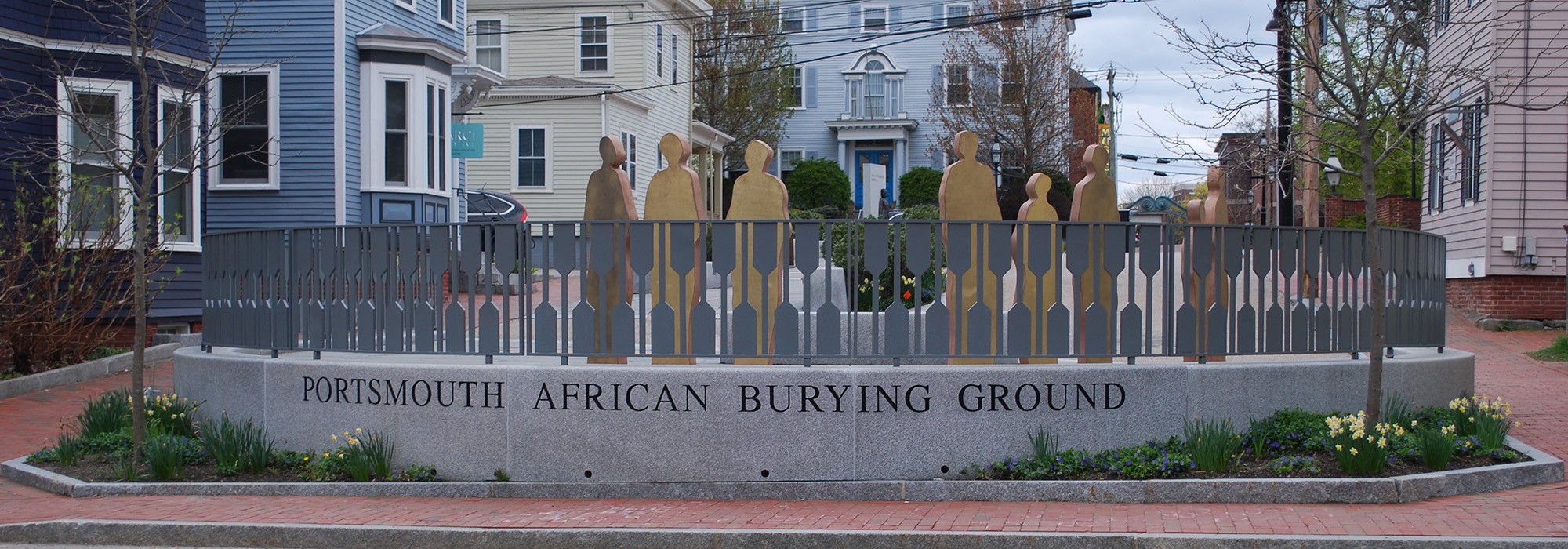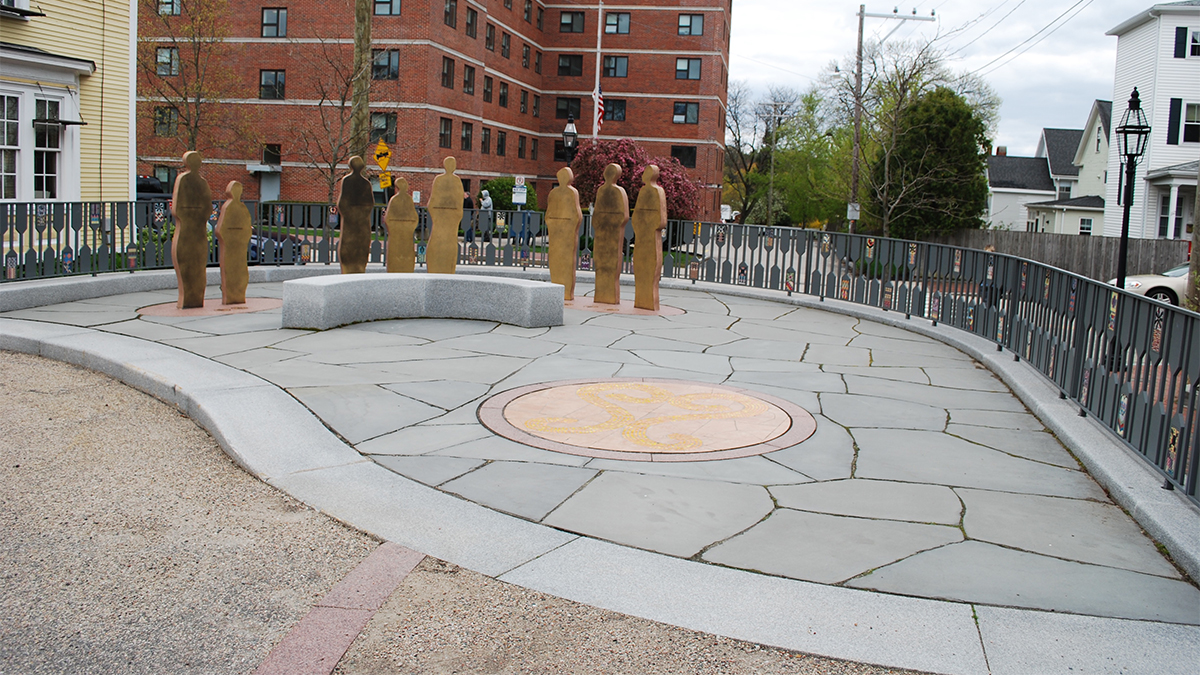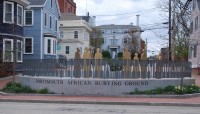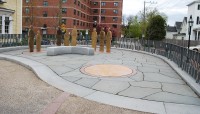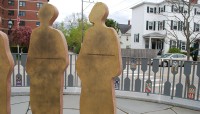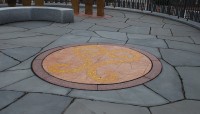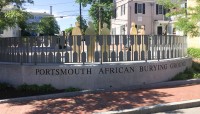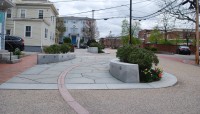Landscape Information
Located downtown, this 0.15-acre memorial was completed in 2015 and incorporates a portion of Chestnut Street between State and Court Streets. The park marks the site of an eighteenth-century “Negro Burying Ground,” which was established ca. 1705. By the 1790s, the burial ground was subsumed by commercial development and remained hidden until 2003, when thirteen deteriorated wooden coffins were unearthed. An additional 200 interred bodies are estimated to remain in situ.
Designed by artist Jerome Meadows with Woodburn & Company, landscape architects, the memorial encompasses the eastern portion of Chestnut Street, edged by residences, and slopes toward the north. Sidewalks border Chestnut Street, allowing pedestrian access from both the north and south. Narrowed to a single lane and anchored by a northern, semi-circular plaza, the street is only accessible to vehicles from State Street.
The memorial’s southern entrance is marked by a monument consisting of two bronze figures on opposite faces of a granite slab. A curvilinear flagstone path, edged with semi-circular, granite beds planted with shrubs, is inset with a ribbon of red paving stones engraved with quotes taken from an unsuccessful 1779 “Petition for Freedom,” submitted by twenty enslaved men to the New Hampshire legislature. The path terminates at a level plaza framed by metal fencing embedded with ceramic tiles set in a pattern inspired by Kinte clothes patterns. The plaza features a commemorative burial chamber that houses the re-interred remains of the thirteen individuals unearthed in 2003; and is embellished with bronze figurative statuary. Two locust trees flank the plaza's northern edge, which, when mature, will offer shade to visitors.
The Portsmouth African Burial Ground is a contributing feature of the Portsmouth Downtown Historic District, listed in the National Register of Historic Places in 2017.



